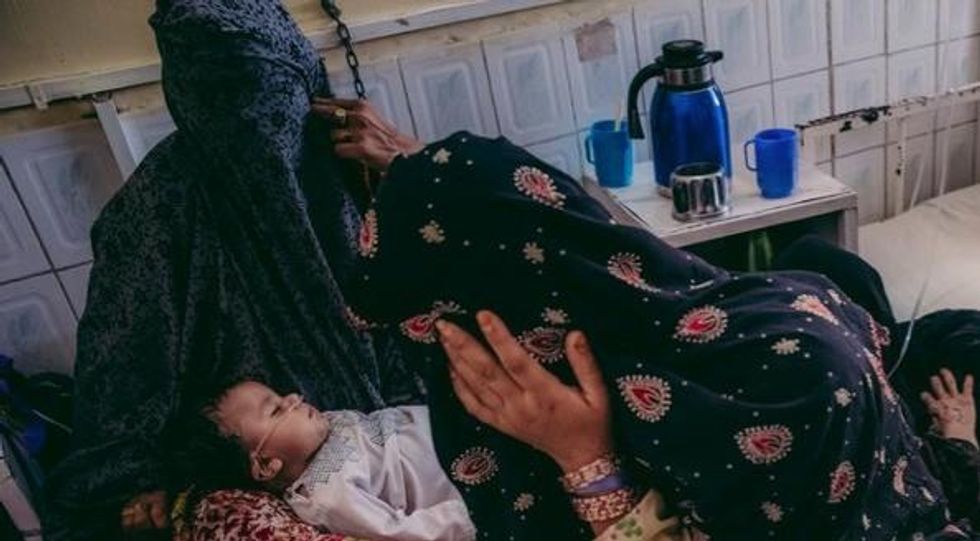Despite the promises of a better future for Afghans following the ouster of the Taliban and more than twelve years after the original invasion, humanitarian organizations operating in the country say that a crisis of childhood malnutrition and starvation has quietly continued and is now "worsening."
United Nations figures show that malnutrition among Afghan children has increased more than 50 percent since 2012, with doctors blaming the instability and violence caused by the U.S.-led occupation as the key reason.
According to a new New York Timesinvestigation, most doctors and aid workers in Afghanistan "agree that continuing war and refugee displacement" are key factors in the rising rate of reported malnutrition in children under five years.
Though definitive and comprehensive health statistics are hard to come by in the country, the Times report says that experts are clear on one thing: "Despite years of Western involvement and billions of dollars in humanitarian aid to Afghanistan, children's health is not only still a problem, but [...] worsening."
Among the doctors very "worried" about the situation, Dr. Mohammad Dawood, a pediatrician at Bost Hospital in Kabul, told the Times that there were seven or eight deaths a month there because of acute malnutrition from June through August, and five in September. Similar rates have been reported throughout the country.
And Dr. Dawood squarely painted the continued war as a chief culprit. "There are mines in their fields, and they can't get to their crops," said Dr. Dawood, speaking of those in Helmand Province, a place heavy violence during the course of the war. "And they can't get to help at local clinics, so they're coming in very late stage in very critical condition."
As part of their reporting, the New York Times also produced a telling, yet heartbreaking, photo essay of crisis which can be viewed here. Warning, the images are graphic.
_________________________________

